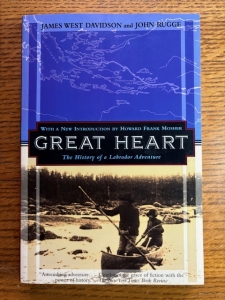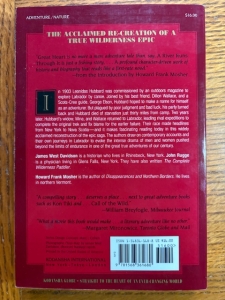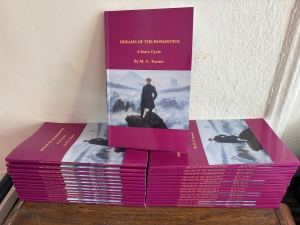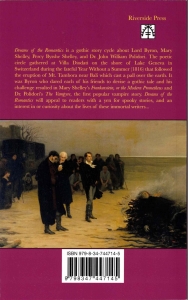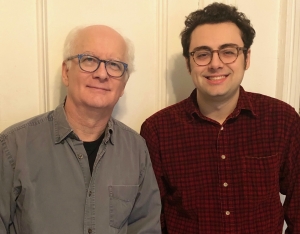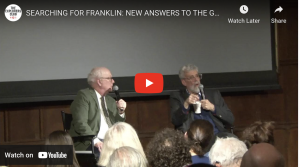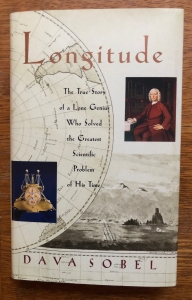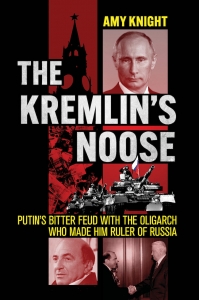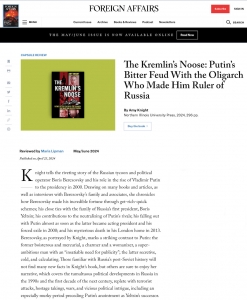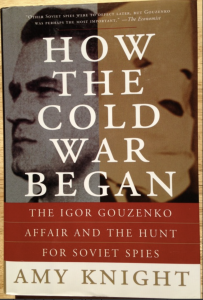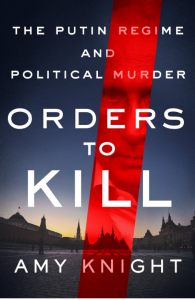 When I was an editorial executive for Carroll & Graf Publishers from 2000-2007, among the most consequential narrative nonfiction books I edited and published was journalist Barbara Bisantz Raymond’s revelatory investigation The Baby Thief: The Untold Story of Georgia Tann, the Baby Seller Who Corrupted Adoption.” Publishers Weekly named it a Notable Book of the Year, in 2007.
When I was an editorial executive for Carroll & Graf Publishers from 2000-2007, among the most consequential narrative nonfiction books I edited and published was journalist Barbara Bisantz Raymond’s revelatory investigation The Baby Thief: The Untold Story of Georgia Tann, the Baby Seller Who Corrupted Adoption.” Publishers Weekly named it a Notable Book of the Year, in 2007.
The basic story—first chronicled by Raymond in an exposé for Good Housekeeping magazine, which inspired a “60 Minutes” segment and then a 1993 TV movie, “Stolen Babies,” with Mary Tyler Moore in an Emmy-winning performance as the titular figure Georgia Tann—was shocking. Tann (1891-1950), nationally lauded for supposedly arranging legal adoptions out of her Tennessee Children’s Home Society, was in reality a baby thief who stole, bartered, and brokered more than 5,000 children from unwed mothers and poor families throughout Appalachia and the South, selling them to wealthy clients around the country, including in Hollywood, where actors Dick Powell, Lana Turner, and Joan Crawford were among her clients, prominent names she would use with future customers. Protected by Memphis political boss Ed Crump, it is estimated that Tann sold more than 5,000 children, making about $5 million in mid-twentieth century dollars (equivalent to more than $100 million today).
Beginning in 1924, and ending only with Tann’s death in 1950, she virtually invented modern American adoption, popularizing it, commercializing it, and corrupting it with secrecy. To cover her crimes, Tann falsified adoptees’ birth certificates, sealing their original documents and issuing new ones that falsely claimed adoptive parents were birth parents. This secrecy was enshrined in law by legislators in the entire United States who claimed it was necessary to spare adoptees what they believed was the stain of illegitimacy.
As the years passed following the original explosion of interest in the story, Barbara Raymond continued to hear from Georgia Tann’s adult adoptees. She kept gathering string, and in 2006, Barbara’s then-agent Lynn Franklin submitted the manuscript of what would become The Baby Thief to me. I quickly made an offer to acquire the rights.
Reading the manuscript for the first time—in those days still a printout on paper—conjured up a cascade of emotions as Raymond’s reporting included many accounts of anguished parents and adult adoptees who’d been separated against their will. She revealed dozens of instances where Tann schemed to separate newly born babies from poor parents, with fictions customized for each situation; a common one was to imply that the babies would be taken from destitute parents only while they got themselves on their feet. Editing the manuscript with Barbara, I also encountered the rich trove of documentation and sources on which she based her narrative. Reading it today, as I have been this week, I see its themes continue to reverberate, with many states still denying adult adoptees their original birth certificates, though other states are now operating under reformed practices. Arguably, the book has done a lot to create more open information-sharing with families by the states.
In a contemporary sense, it strikes me now, more than fifteen years after I edited the manuscript, that the baby trafficking Georgia Tann undertook, and the national baby sales network she developed, could be said to have been a sort of proto-version of QAnon—the mythology of this decade which purports that members of the Democrat party are engaged in stealing children from their parents—only Georgia Tann really did it.
When published in hardcover, the reviews were exceptional:
“An episode in American adoption history little remembered by the public at large, the crimes of nationally-lauded Memphis orphanage director Georgia Tann are skillfully and passionately recounted by freelance writer Raymond, herself an adoptive mom. The portrait of Tann that emerges is a domineering, indefatigable figure with an insane commitment to ends-justify-the-means logic, who oversaw three decades of baby-stealing, baby-selling and unprecedented neglect. Meanwhile, she did more to popularize, commercialize and influence adoption in America than anyone before her. Tann operated carte blanche under corrupt Mayor Edward Hull Crump from the 1920s to the ’50s, employing a nefarious network of judges, attorneys, social workers and politicos, whom she sometimes bribed with “free” babies; her clients included the rich, the famous and the entirely unfit (who more than occasionally returned their disappointing children for a refund). “Spotters” located babies and young children ripe for abduction-from women too uneducated or exhausted to fight back—and Tann made standard practice of altering birth certificates and secreting away adoption records to attract buyers and cover her tracks—self-serving moves that have become standard practice in modern adoption. A riveting array of interviews with Tann’s former charges reveals adults still struggling with their adoption ordeal, childhood memories stacked with sexual abuse, torture and confusion. Raymond’s dogged investigation makes a strong case for “ridding adoptions of lies and secrets,” warning that “until we do, Tann and her imitators will continue to corrupt adoption.” A rigorous, fascinating, page-turning tale, this important book is not for the timorous.—Publishers Weekly, a starred review
“A fascinating dark tale of Ms. Tann’s influence [that] gives voice to the brokenhearted children and their birth parents damaged by her actions. [R]iveting.’”—Dallas Morning News
“Raymond recounts this astonishing and horrifying true story with tremendous self-awareness and intrepid research into Tann’s ongoing legacy.”—The Tampa Tribune
“Fascinating, insightful, chilling and compelling. A very important book and a terrific read.”—Adam Pertman, Executive Director of the Evan B. Donaldson Adoption Institute and author of Adoption Nation
I thought so highly of the book that when I moved to a new editorial position early in 2008—to run Sterling Publishing’s Union Square Press imprint—I quickly acquired the reprint rights to the book, and published it in trade paperback later that year. In the years that followed the book attained elevated status among adult adoptees and their families. As one measure of its impact, web pages for the book on Amazon and Goodreads total more than 2000 comments from grateful readers, with remarks like this one:
“Thank you for lending your voice to those still seeking their families lost. I recommend this book. In memory of my precious father in law, Fred Crumley, who was an amazing dad, paw, I am still seeking truth for our family. His birth mother was Carrie Cates. He was adopted from The Tennessee Children’s Home Society, along with a sister.”
 Sadly, agent Lynn Franklin, who’d represented many important authors along with Barbara Bisantz Raymond, including Archbishop Desmond Tutu, died in 2021 at age 74. Barbara, who lives in my old hometown of Cleveland, and I have stayed in touch over the years. Recently, she contacted me when a documentary producer got in touch with her about the book and my company Philip Turner Book Productions is now her literary agent. In addition to possible adaptations for a documentary or a feature, and possibly a new paperback edition, I also hope to make a deal on the author’s behalf for an audiobook, as there has never been one.
Sadly, agent Lynn Franklin, who’d represented many important authors along with Barbara Bisantz Raymond, including Archbishop Desmond Tutu, died in 2021 at age 74. Barbara, who lives in my old hometown of Cleveland, and I have stayed in touch over the years. Recently, she contacted me when a documentary producer got in touch with her about the book and my company Philip Turner Book Productions is now her literary agent. In addition to possible adaptations for a documentary or a feature, and possibly a new paperback edition, I also hope to make a deal on the author’s behalf for an audiobook, as there has never been one.
In the meantime, if you have an interest in adoption, and want to know how our practices surrounding it developed in the last century, or if you just want to read a superbly paced narrative nonfiction book, a true crime thriller with a powerful social message, I suggest you pick up a copy of The Baby Thief: The Untold Story of Georgia Tann, the Baby Seller Who Corrupted Adoption. 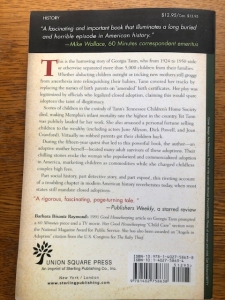
 This hour-long youtube video offers a brilliant book conversation between Chicago writers Alex Kotlowitz, author of the 1992 classic social welfare book There Are No Children Here: The Story of Two Boys Growing Up in The Other America, and Donna Seaman, longtime editor of Booklist magazine, and author of the recent memoir River of Books: A Life in Reading, published by Ode Books, a cool imprint of Seminary Co-Op Bookshop and 57th Street Books devoted to books about books, bookselling, publishing, etc. Now that’s my kind of imprint!
This hour-long youtube video offers a brilliant book conversation between Chicago writers Alex Kotlowitz, author of the 1992 classic social welfare book There Are No Children Here: The Story of Two Boys Growing Up in The Other America, and Donna Seaman, longtime editor of Booklist magazine, and author of the recent memoir River of Books: A Life in Reading, published by Ode Books, a cool imprint of Seminary Co-Op Bookshop and 57th Street Books devoted to books about books, bookselling, publishing, etc. Now that’s my kind of imprint!

